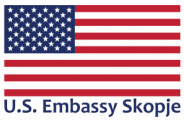How Finland wins in the fight against fake news
Many countries in the world, especially those with a pro-Western orientation, are more or less targets of fake news and false information aimed at the country’s strategic commitments, especially those towards the European Union, NATO membership, etc. As it is no longer a myth that these news come from one center, Russia, countries are beginning to develop also systems and strategies that will make them more resistant to these fake news and digital propaganda that can reach the crux of the political and economic systems and make long-term divisions in the society.
Finland is one of the countries that, as Russia’s neighbor was one of the first ones to face this type of propaganda. The government took these threats seriously and began taking systemic measures in order to manage this infernal problem.
Here’s what can be learned from Finland, because it can be crucial to the Western civilization.
Security doesn’t need new tools. It needs new rules.
The Finnish government launched its anti-fake news campaign in 2014, two years before Russia intervened in the US presidential election, in order to train citizens, students, journalists and politicians on how to fight fake news that initiated divisions in the society.
The initiative was designed to prepare citizens of all ages to handle the complex digital world of today and the future. Finland, which has more than a thousand kilometers of border with Russia, is deeply aware of the consequences it might face if it doesn’t fight the fake news.
This Nordic country faced Russian propaganda 101 years ago when it declared independence from Russia. But in 2014, after Moscow annexed Crimea and supported the rebels in Eastern Ukraine, it became more than obvious that the battlefield had changed and information warfare become a priority.
It is difficult to determine the scope, all the purposes of the false information operations, but the main areas where the fake news attacks are immigration, the European Union, or whether Finland should or should not be a NATO member.
Since the crackdown culminated in 2014, President Ninisto has called on every Finn to take responsibility in the fight against false information. A year later, Finland also brought in American experts to train civil servants on how to identify and understand fake news, why it spreads so fast, and to develop strategies to counteract it. Reforms in the education system have also started in this direction, with an emphasis on developing critical thinking.
Even though it’s difficult to measure results in real time, this approach works and the measures produced good results. Finland is now at the top of the list of countries that can recognize and resist fake news. Other countries are taking the Finnish model in fighting false information. At the top of this list are Finland, the Netherlands, Denmark, Sweden, in the middle Slovenia, Spain, Luxembourg, Portugal, at the bottom are Montenegro, Bosnia, Albania, Turkey, while Macedonia is on the bottom of this list.
School examples:
Current issues are discussed regularly in schools, not only in Finland, but also in
Some schools have partnered with the Finnish fact-checking agency Faktaabari in order to develop digital literacy skills in students in primary and secondary schools.
Finding videos, YouTube and social media content, comparing content, discovering clickbait news, fake news and information.
Exercises with students to write fake news themselves, then analyze, compare, and discuss them.
“What we want our students to learn is to think twice before sharing or liking something on the social networks. Who has written this? Where is it published? Can I find the same information on another site from another source? ”Says Kari Kivinen, director of one of the Finnish schools that started the Anti-Fraud Program.
Democracy is difficult to export, but experts can be imported
This is exactly what Finland did in 2016 in order to manage the digital attacks coming from its neighbor from the east. “The Finnish government knew that the Kremlin was interfering in the Finnish politics, but they had no way or context to interpret those attempts. Does this mean an attack, a war?”, says Jed Willard, director of the Franklin Delano Roosevelt Center for Global Action at Harvard University, one of the experts that Finland has hired to fight fake news.
Of course, Russia refuses to admit that it interferes in the internal affairs of other countries. Therefore, behind closed doors, Willard’s workshops focus more on building a solid, strong national narrative than on revealing false information.
Contamination of the Internet
The Finns have a strong public television service and strong regional competition in the print media. But it is more and more believed that simply learning media literacy and critical thinking is not enough. Companies that own social media also need to prevent the spread of disinformation, such as Facebook, Google, Twitter, YouTube, which allow Russian trolls to spread. “Just like other companies that pollute the environment, forests, water, these too need to be regulated because they pollute people’s minds,” says Jessica Aro, a journalist on Finnish state television.
European policies that fight disinformation are also moving in this direction. The first sign that Finland has found its way in the war against fake news is that other countries are also adopting their model.
European attempts to cooperate with the private sector
The private sector plays a big role. Private companies are the ones that have online platforms where disinformation is posted and spread. Based on algorithms, driven by ads, the dynamics of the social media serve as a major pathway for spreading false information.
The European Union has made it clear that it is precisely the private companies that fail to deal with this problem and urges corporations to immediately take measures and initiatives to fight this issue.
I am text block. Click edit button to change this text. Lorem ipsum dolor sit amet, consectetur adipiscing elit. Ut elit tellus, luctus nec ullamcorper mattis, pulvinar dapibus leo.
In September 2018, a European Union code for the management of disinformation was issued. It marks, for the first time, that the worldwide online industries are voluntarily agreeing to sign standards for regulation to reduce fake news and prevent its spread. In order to implement these standards, a monitoring body has been set up under the supervision of the European Union.
This step is vital but not sufficient. The whole online business model is based on more or less manipulative content that is spreading rapidly and massively, which is the main trump card for fake news campaigns.
A.M.D.


